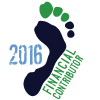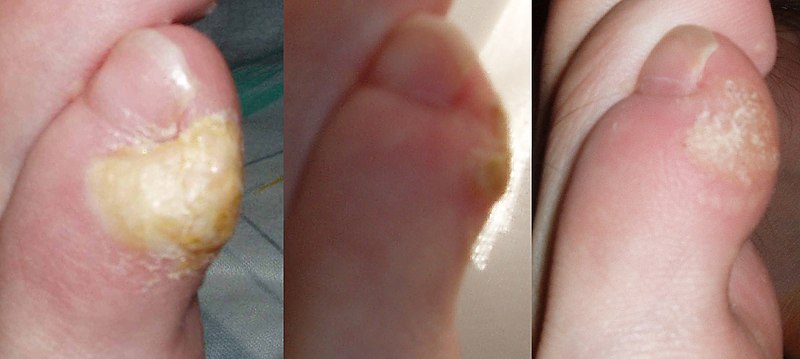I was looking to see if I could speed up my calluses (only thing I found was to add rubbing alcohol on your skin to get it to dry out....according to eric clapton).... and I came across this. I've had a split before... man those things hurt.
How to Toughen Up Your Feet to Dance Barefoot
Deborah Vogel | April 1, 2005ShareThis
Foot calluses can be unsightly in sandals, but for modern dancers, they’re a badge of honor that keep feet from sticking to the floor and protect against blisters and other injuries to the skin. Here’s how to build and care for your calluses.
Building Calluses
Calluses develop naturally on the balls of the feet and heels in response to the friction caused by twisting and turning barefoot on dance and stage floors. The best way to build calluses is simply by taking class regularly and avoiding callus-removing pedicure products.
If you take a break from dance, your calluses may disappear, which means that suddenly launching yourself into an intense training schedule could quickly lead to raw feet. Ease into your regimen to give your peds time to toughen up. For instance, if you take a two-hour class, wear foot thongs for the second half. Gradually work up to taking the entire class barefoot.
Callus Upkeep
Dr. Thomas Novella, a NYC-based podiatrist who specializes in the care of dancers’ feet, rarely trims calluses and advises dancers not to do so on their own. He learned this lesson the hard way: Once, he filed down a modern dancer’s callus too much and it took three weeks to rebuild.
This doesn’t mean that you have to ignore calluses completely. The surface of a callus needs to be flexible for relevés and turns. If it’s too dry, it can rip. To keep them pliable, soak feet in epsom salts and warm water. KT Niehoff, director of Lingo Dancetheater and codirector of Velocity Dance Center in Seattle, keeps her calluses flexible by applying Vaseline each night and wearing socks to bed.
Sometimes a thick, dry callus can pull uncomfortably on the non-callused skin surrounding it, in which case you can use a pumice stone, but be careful only to soften the callus. If you remove it completely, the fragile skin underneath is likely to blister the next time you dance barefoot.
Healing Splits
Always keep an eye on your feet. When calluses get too rough and hard around the edges, they can split easily. (A split is a cut or tear that exposes the delicate skin underneath a callus.)
Treat splits immediately to avoid infection—dance and stage floors are not always the cleanest. If the bottom of your foot becomes red, hot, swollen and painful, there’s a good chance it’s infected. After soaking in epsom salts, apply a disinfectant such as Betadine. Place a Band-Aid across the split (perpendicularly, as if the split is a river and the Band-Aid is a bridge), then wrap your foot in tape or an adhesive bandage such as Elastoplast. If the wrap causes too much friction with the floor to dance, put moleskin, a smooth flannel padding available at most drugstores, on the outside of the wrap. You can also dance in foot thongs until it heals.
Change Band-Aids at least once per day. To remove, press your thumb over the center, then pull one end up before the other end, keeping the split closed as you lift off the Band-Aid.
Do's
1. Do soak feet in epsom salts and warm water after dancing. When calluses become too thick, use a pumice stone to lightly rub off the top layer of skin only.
2. Do keep calluses from tearing
by softening feet with petroleum jelly (such as Vaseline) or lanolin-based creams or lotions such as Eucerin. Lanolin is a fast-absorbing, deeply penetrating grease.
3. Do keep your feet clean, particularly if your callus has a split. The open area is especially susceptible to infection.
4. Do dance in foot thongs until splits heal.
Don'ts
1. Don’t cut or shave down calluses.
2. Don’t use acid-based over-the-counter callus or corn medications, because they are more likely to dissolve calluses completely. Don’t use products that include salicylic acid or trichloroacetic acid.
3. Don’t expect to build up calluses quickly. Work up to taking an entire class barefoot.
How to Toughen Up Your Feet to Dance Barefoot
Deborah Vogel | April 1, 2005ShareThis
Foot calluses can be unsightly in sandals, but for modern dancers, they’re a badge of honor that keep feet from sticking to the floor and protect against blisters and other injuries to the skin. Here’s how to build and care for your calluses.
Building Calluses
Calluses develop naturally on the balls of the feet and heels in response to the friction caused by twisting and turning barefoot on dance and stage floors. The best way to build calluses is simply by taking class regularly and avoiding callus-removing pedicure products.
If you take a break from dance, your calluses may disappear, which means that suddenly launching yourself into an intense training schedule could quickly lead to raw feet. Ease into your regimen to give your peds time to toughen up. For instance, if you take a two-hour class, wear foot thongs for the second half. Gradually work up to taking the entire class barefoot.
Callus Upkeep
Dr. Thomas Novella, a NYC-based podiatrist who specializes in the care of dancers’ feet, rarely trims calluses and advises dancers not to do so on their own. He learned this lesson the hard way: Once, he filed down a modern dancer’s callus too much and it took three weeks to rebuild.
This doesn’t mean that you have to ignore calluses completely. The surface of a callus needs to be flexible for relevés and turns. If it’s too dry, it can rip. To keep them pliable, soak feet in epsom salts and warm water. KT Niehoff, director of Lingo Dancetheater and codirector of Velocity Dance Center in Seattle, keeps her calluses flexible by applying Vaseline each night and wearing socks to bed.
Sometimes a thick, dry callus can pull uncomfortably on the non-callused skin surrounding it, in which case you can use a pumice stone, but be careful only to soften the callus. If you remove it completely, the fragile skin underneath is likely to blister the next time you dance barefoot.
Healing Splits
Always keep an eye on your feet. When calluses get too rough and hard around the edges, they can split easily. (A split is a cut or tear that exposes the delicate skin underneath a callus.)
Treat splits immediately to avoid infection—dance and stage floors are not always the cleanest. If the bottom of your foot becomes red, hot, swollen and painful, there’s a good chance it’s infected. After soaking in epsom salts, apply a disinfectant such as Betadine. Place a Band-Aid across the split (perpendicularly, as if the split is a river and the Band-Aid is a bridge), then wrap your foot in tape or an adhesive bandage such as Elastoplast. If the wrap causes too much friction with the floor to dance, put moleskin, a smooth flannel padding available at most drugstores, on the outside of the wrap. You can also dance in foot thongs until it heals.
Change Band-Aids at least once per day. To remove, press your thumb over the center, then pull one end up before the other end, keeping the split closed as you lift off the Band-Aid.
Do's
1. Do soak feet in epsom salts and warm water after dancing. When calluses become too thick, use a pumice stone to lightly rub off the top layer of skin only.
2. Do keep calluses from tearing
by softening feet with petroleum jelly (such as Vaseline) or lanolin-based creams or lotions such as Eucerin. Lanolin is a fast-absorbing, deeply penetrating grease.
3. Do keep your feet clean, particularly if your callus has a split. The open area is especially susceptible to infection.
4. Do dance in foot thongs until splits heal.
Don'ts
1. Don’t cut or shave down calluses.
2. Don’t use acid-based over-the-counter callus or corn medications, because they are more likely to dissolve calluses completely. Don’t use products that include salicylic acid or trichloroacetic acid.
3. Don’t expect to build up calluses quickly. Work up to taking an entire class barefoot.















